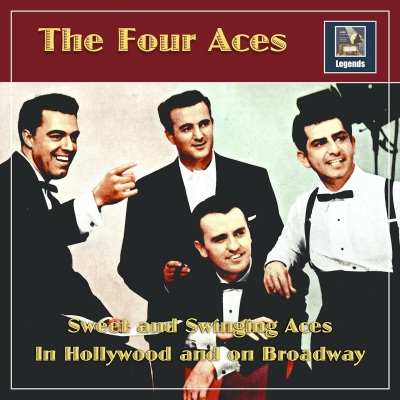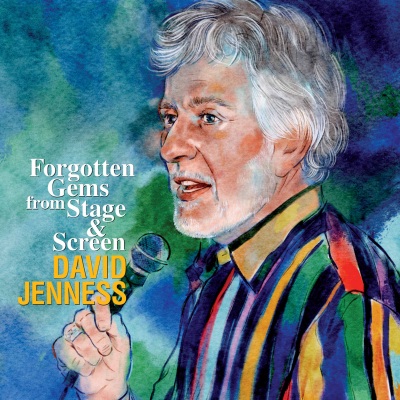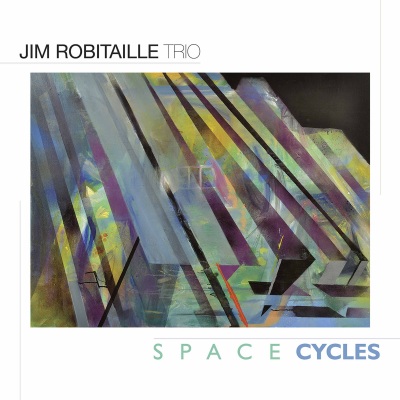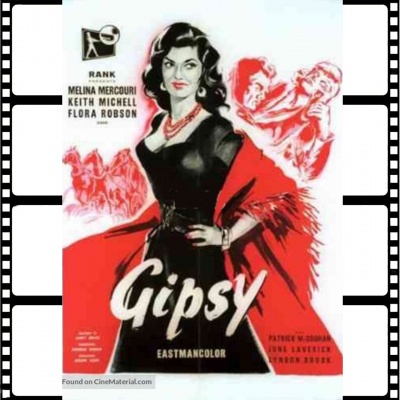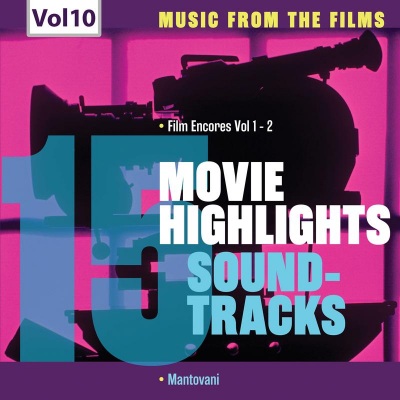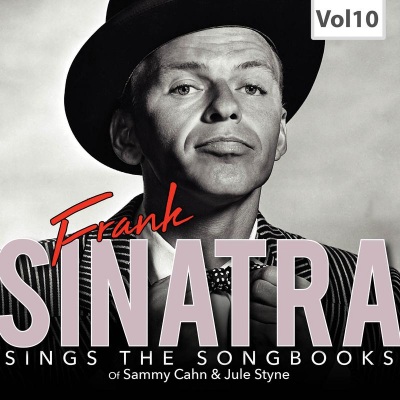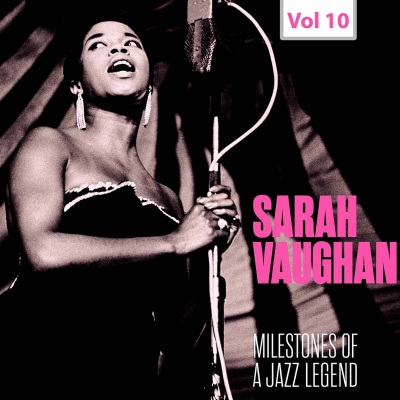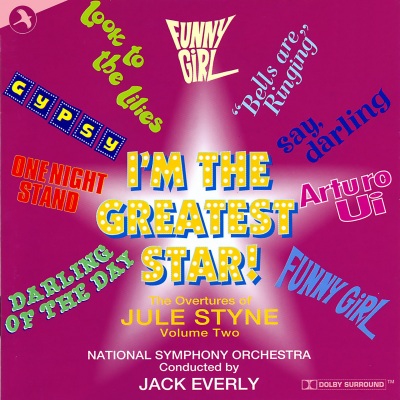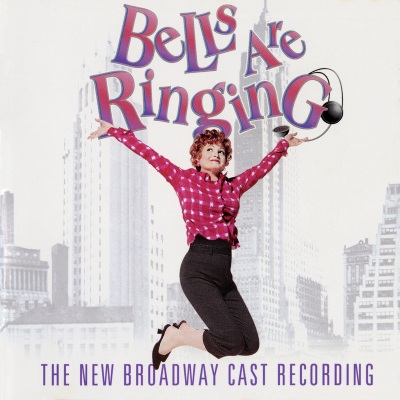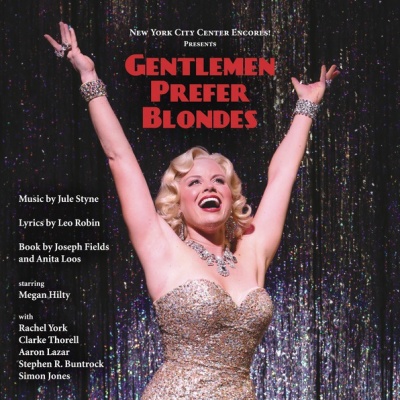
Jule Styne
by William RuhlmannJule Styne was a composer who, with lyricist Sammy Cahn, wrote many hits during the 1940s, including "I've Heard That Song Before," "I'll Walk Alone," and "Let It Snow! Let It Snow! Let It Snow!" He then moved to Broadway, with credits such as Gypsy, Funny Girl, Gentlemen Prefer Blondes, and Bells Are Ringing. In both phases of his career, he displayed a talent for writing songs crafted for specific singers, such that they were introduced and popularized by artists including Frank Sinatra, Doris Day, Ethel Merman, and Barbra Streisand. Born in London, England, on the last day of 1905, Julius Kerwin Stein was the son of Russian immigrants Isadore and Anna (Kertman) Stein. His father was the proprietor of a butter-and-egg store. (He later altered his name to Jule Styne -- with his first name pronounced like the girl's name "Julie" -- to avoid being confused with Dr. Julius Stein, the head of the Music Corporation of America [MCA], a major theatrical booking agency.) He began taking piano lessons at the age of six, continuing them after the family immigrated to the U.S. and settled in Chicago, IL, in 1912, and proved to be a child prodigy. At nine, he performed as a soloist with the Chicago, Detroit, and St. Louis symphony orchestras. As he grew older, however, he turned out not to have the sort of large hands required for a concert pianist, and an injury to one of his fingers in an accident confirmed his decision to switch to less-demanding popular music, as he began to play in local bands during his early teens. At 16, he started writing songs, and just after turning 21 enjoyed his first hit in 1927 with "Sunday" (co-credited to Ned Miller, Chester Conn, and Benny Krueger), which was recorded by Cliff Edwards, Jean Goldkette & His Orchestra with vocals by the Keller Sisters, and Gene Austin. After leading his own band in Chicago in the early '30s, Styne moved to New York in 1934 and became a vocal coach. He worked as accompanist and conductor for Harry Richman in 1936. In 1937, he took a job as a vocal coach with 20th Century-Fox and moved to Hollywood. As of the film Kentucky Moon (May 1938), he also began contributing songs to movies. In 1940, he moved to Republic Pictures, employed specifically as a songwriter. "Who Am I?" (lyrics by Walter Bullock), written for Hit Parade of 1941 (December 1940) earned him his first Academy Award nomination for best song. In 1941, he began working with lyricist Frank Loesser and moved to Loesser's studio, Paramount, where they wrote songs for the 1942 film Sweater Girl. Before it came out, two of the songs had already become hits. "I Said No!" was recorded by Alvino Rey & His Orchestra with vocals by Yvonne King and peaked in the Top Five in February 1942 (a version by Jimmy Dorsey & His Orchestra with vocals by Bob Eberly and Helen O'Connell reached the Top Ten), and "I Don't Want to Walk Without You," recorded by Harry James & His Orchestra with vocals by Helen Forrest made the Top Five in March. (Bing Crosby also took it into the Top Ten, and Dinah Shore's cover was a chart item, too. In 1980, Barry Manilow revived the song for a Top 40 hit.) In 1942, Styne met a new lyric partner, Sammy Cahn. Their collaboration began with "I've Heard That Song Before," written for the film Youth on Parade (December 1942). It was recorded by Harry James with Helen Forrest for a single that spent 13 weeks at number one, went gold, and became the most successful disc of 1943. The song earned Styne his second Oscar nomination. His third came with "A Change of Heart" (lyrics by Harold Adamson) from Hit Parade of 1943 (April 1943). Styne and Cahn's independent song "Vict'ry Polka" was recorded by the team of Bing Crosby and the Andrews Sisters, who took it into the Top Ten in January 1944. April saw the release of the film Follow the Boys, featuring Dinah Shore's performance of Styne and Cahn's "I'll Walk Alone." Her recording spent four weeks at number one starting in October, beating out Top Ten renditions by Martha Tilton and Mary Martin, as well as a chart single by Louis Prima. (After Jane Froman sang the song in her 1952 film biography With a Song in My Heart, Don Cornell revived it for a Top Five hit, and it was also covered in chart singles by Froman, Richard Hayes, and Margaret Whiting.) Styne racked up Academy Award nomination number four for the song. Styne and Cahn tried their hands at a Broadway-bound musical with Glad to See You in the fall of 1944, but the show closed out of town and its score was forgotten except for "Can't You Read Between the Lines?," recorded for a Top Ten hit in June 1945 by Jimmy Dorsey with vocals by Jean Cromwell. Their next movie song score was Carolina Blues (December 1944), starring bandleader Kay Kyser, which included "There Goes That Song Again," recorded by Russ Morgan & His Orchestra for a Top Five hit in January 1945 (with Top Ten covers by Swing and Sway with Sammy Kaye with vocals by Nancy Norman, Kyser & His Orchestra with vocals by Georgia Carroll, and Billy Butterfield & His Orchestra with vocals by Margaret Whiting, as well as a chart entry by Kate Smith) and "Poor Little Rhode Island," a number 11 hit for Guy Lombardo & His Royal Canadians with vocals by Stuart Foster that later became the state song of Rhode Island. Styne and Cahn had begun writing songs for Cahn's friend Frank Sinatra with the film Step Lively in 1944, but they first scored a hit with him when he recorded the independent song "Saturday Night (Is the Loneliest Night of the Week)," which peaked in the Top Five in March 1945. (Sammy Kaye with Nancy Norman and Frankie Carle & His Orchestra with vocals by Phyllis Lynne had Top Ten covers, and the Four King Sisters and Woody Herman & His Orchestra with vocals by Frances Wayne also charted with it.) The songwriters' next film, Tonight and Every Night (March 1945), featured "Anywhere," which brought Styne his fifth Oscar nomination. The Sinatra-starring Anchors Aweigh (July 1945) brought his sixth, and his second in the same year, for "I Fall in Love Too Easily," and it also featured "What Makes the Sunset?," a chart entry for Sinatra. With the end of World War II, Styne and Cahn wrote the quintessential song for reconciliation, "It's Been a Long, Long Time." The independent composition was recorded by Harry James with vocals by Kitty Kallen and hit number one for three weeks starting in November 1945. Bing Crosby, accompanied by Les Paul & His Trio, covered it for a two-week stay at number one in December, and there was also a Top Five cover by Charlie Spivak & His Orchestra with vocals by Irene Daye and a Top Ten version by Stan Kenton & His Orchestra with vocals by June Christy. As a result, Styne and Cahn ranked as the top pop songwriting team of 1945. They did not slow down the following year, beginning with a holdover from the year before, the seasonal "Let It Snow! Let It Snow! Let It Snow!," recorded by Vaughn Monroe & His Orchestra, which entered the charts in December 1945 and hit number one for the first of five weeks in January 1946. (The song also reached the Top Ten for Woody Herman and for Connee Boswell and Russ Morgan, with a chart entry by Bob Crosby & His Orchestra.) Another independent song, "Five Minutes More," was recorded by Sinatra and spent four weeks at number one starting in September. (There were four charting cover versions, including a Top Five by Tex Beneke and the Glenn Miller Orchestra, Top Tens by the Three Suns and Skitch Henderson with vocals by Ray Kellogg, and a chart entry by Bob Crosby.) Sinatra also scored a hit with "The Things We Did Last Summer," which peaked in the Top Ten in December, with a Top Ten cover by Jo Stafford and a chart entry by Vaughn Monroe. (Shelley Fabares had a chart revival of the song in 1962.) Styne and Cahn next wrote songs for the Sinatra film It Happened in Brooklyn (March 1947), and the singer released a single with the Top Five hit "I Believe" on one side and the chart entry "Time After Time" on the other. (In 1966, Chris Montez revived "Time After Time" for a Top 40 hit.) They then gave Broadway another try, writing songs for High Button Shoes, starring Phil Silvers and Nanette Fabray. It opened October 9, 1947, and ran 727 performances, making it the biggest hit of the 1947-1948 Broadway season. A cast album was released by RCA Victor Records. The songwriters returned to Hollywood and signed a three-picture deal with Warner Bros. that commenced with Romance on the High Seas (June 1948). It marked the film debut of former band singer Doris Day, who recorded "It's Magic," which peaked in the Top Five in September 1948 and brought Styne his seventh Academy Award nomination. (Dick Haymes and Gordon MacRae had Top Ten covers, and Tony Martin, Sarah Vaughan, and Vic Damone reached the charts with their versions.) The score also included "Put 'Em in a Box, Tie 'Em with a Ribbon (And Throw 'Em in the Deep Blue Sea)," which resulted in chart entries for Eddy Howard and the King Cole Trio. Two Guys from Texas (August 1948) was the second film in Styne and Cahn's contract, and it included "Ev'ry Day I Love You (Just a Little Bit More)," which brought chart entries to Vaughn Monroe, Dick Haymes, and Jo Stafford. The title song from their third and final effort, It's a Great Feeling (August 1949), gave Styne his eighth Oscar nomination. With the conclusion of the Warner Bros. contract in 1949, Styne and Cahn split amicably because Styne wanted to work on Broadway, while Cahn was content to remain in Hollywood. Styne teamed up with lyricist Leo Robin for Gentlemen Prefer Blondes, which opened on Broadway on December 8, 1949, and ran 740 performances. It made a star of Carol Channing, who appeared on the Top Five cast album released by Columbia Records. (The 1953 movie version starring Marilyn Monroe retained only three Styne/Robin compositions from the score, "Bye Bye Baby," "A Little Girl from Little Rock," and "Diamonds Are a Girl's Best Friend." The soundtrack album released by MGM Records was a Top Five hit. The show was revived on Broadway for a brief run in 1995, with a cast album released by DRG Records.) Styne tried his hand at being a theatrical producer instead of a songwriter with the musical Make a Wish (April 18, 1951), which had songs by Hugh Martin. It was not a success, but later shows produced by Styne were, including a revival of Richard Rodgers and Lorenz Hart's Pal Joey (January 3, 1952) and Mr. Wonderful (March 22, 1956), starring Sammy Davis, Jr. Styne's next theatrical effort as a composer was a revue called Two on the Aisle, for which he wrote songs with the lyricist team of Betty Comden and Adolph Green, who would become his most frequent collaborators from this point on. The show, starring Bert Lahr and Dolores Gray, opened on July 19, 1951, and ran a respectable 276 performances, with a cast album released by Decca Records. Then came the book musical Hazel Flagg, with lyrics by Bob Hilliard. It opened on February 11, 1953, and ran an unsuccessful 190 performances, but RCA Victor released a cast album; Eddie Fisher recorded "How Do You Speak to an Angel?" for a chart entry; and the show, which had been based on the 1937 Carole Lombard movie Nothing Sacred, was itself adapted into a 1954 film for Dean Martin and Jerry Lewis called Living It Up, for which Styne and Hilliard wrote some new songs. Capitol Records released a soundtrack album, and Don, Dick & Jimmy recorded a cover of "That's What I Like" for a chart entry in November 1954. Sammy Cahn lured Styne back to movie composing on a one-shot basis for the title song to the film Three Coins in the Fountain (May 1954). Frank Sinatra sang the song on the soundtrack and recorded it for a Top Five hit, but he was outdistanced by the Four Aces, whose cover hit number one and went gold. "Three Coins in the Fountain" marked Styne's ninth Academy Award nomination and, finally, his only Oscar. Styne reunited with Comden and Green to write extra songs for a new stage musical version of Peter Pan starring Mary Martin that opened on Broadway on October 20, 1954. Initially, the show had consisted of songs by Moose Charlap and Carolyn Leigh, but Styne, Comden, and Green added such numbers as "Never Never Land." Peter Pan ran 149 performances, its run truncated to accommodate a live television broadcast. RCA Victor released a cast album. The show was revived on Broadway in 1979, 1990, and 1998. Also with Comden and Green, Styne composed his next full-fledged Broadway score for Bells Are Ringing, starring Judy Holliday. Before it opened on November 29, 1956, Tony Bennett recorded "Just in Time" for a chart entry; later, Doris Day charted with "The Party's Over." The show ran 924 performances, making it Styne's biggest stage hit yet. The Columbia Records cast album reached the charts, and there was a soundtrack album on Capitol when the film version with Holliday and Dean Martin appeared in June 1960. A Broadway revival starring Faith Prince was mounted in 2001 with a cast album released by Varèse Sarabande Records. Styne reunited with Leo Robin for an original television musical, Ruggles of Red Gap, broadcast on February 3, 1957, with a soundtrack album released by Verve Records. Say, Darling, the next Styne/Comden/Green musical, was modestly successful, running 332 performances after opening on April 3, 1958, with a cast album on RCA Victor including "Dance Only with Me," which became a Top 40 hit in a cover by Perry Como. Styne was brought into the creation of Gypsy, a musical based on the memoirs of stripper Gypsy Rose Lee but focused on her tyrannical stage mother, by its star, Ethel Merman, with Stephen Sondheim, who had been set to write the songs alone, forced to do only the lyrics. Upon opening on May 21, 1959, it became the most celebrated work of Styne's career. The 702-performance run was only the beginning of the show's life. The cast album on Columbia reached the Top 20 and stayed in the charts more than two years, earning Styne a Grammy Award for best cast album. Johnny Mathis' Top 40 recording of "Small World" helped it earn a Grammy nomination for song of the year. (Although they did not become hit singles, such songs as "Some People," "Let Me Entertain You," and "Everything's Coming Up Roses" were recorded frequently.) The 1962 film version starring Rosalind Russell generated a Top Ten soundtrack album on Warner Bros. Records. There was a 1973 London revival starring Angela Lansbury that transferred to Broadway in 1974, with a cast album on RCA Victor; a 1989 Broadway revival starring Tyne Daly with a cast album on Elektra Records; a 1993 television version starring Bette Midler with a charting cast album on Atlantic Records; a 2003 Broadway revival starring Bernadette Peters with a charting cast album on Broadway Angel Records that won a Grammy Award; and a 2008 Broadway revival starring Patti LuPone. Styne's songs with lyrics by George David Weiss did not help Freedomland, a theme park in the New York City borough of the Bronx, succeed when it opened on June 19, 1960, but one of them, "Johnny Freedom," was recorded for a chart entry by Johnny Horton. Before the year was out, Styne was back on Broadway with Comden and Green for another show starring Phil Silvers, Do Re Mi. It ran a modest 400 performances after opening on December 26, 1960, helped by the pre-opening recording of "Make Someone Happy" by Perry Como, who took the song into the charts and enabled it to earn a Grammy nomination for song of the year. The cast album released by RCA Victor made the Top 20. A year later came Subways Are for Sleeping, another Styne/Comden/Green effort that opened December 27, 1961, and closed as a failure after 205 performances, although the cast album on Columbia reached the Top 100. Styne first collaborated with lyricist Bob Merrill on the songs for the animated TV musical Mr. Magoo's Christmas Carol, which was broadcast December 18, 1962. Styne composed "Now!," a civil rights anthem, for Lena Horne, with lyrics by Comden and Green, and she took it into the charts in November 1963. But he was not otherwise heard from until the appearance of Funny Girl, a long-gestating musical biography of Ziegfeld Follies star Fanny Brice, which opened on Broadway on March 26, 1964. Its star was Barbra Streisand, who helped make it a massive hit, with a run of 1,348 performances, making it by far Styne's longest-running show. The songs, with lyrics by Bob Merrill, included "People," which Streisand recorded for a Top Ten hit and which was nominated for the Grammy for song of the year. (Streisand also reached the charts with a title song for the show that actually was cut from the score.) The cast album released by Capitol was a gold-selling Top Five hit and the winner of the Grammy Award for best show album. The show was adapted into a movie in 1968, also starring Streisand. The soundtrack album on Columbia sold over a million copies, and Styne earned his tenth Academy Award nomination for a new song called "Funny Girl" that he and Merrill wrote for the picture. The Tymes took the occasion to revive "People" for a Top 40 hit. Within two months of the opening of Funny Girl, Styne had both another stage musical on Broadway and an original movie musical in theaters. The film was What a Way to Go! (May 1964), starring Shirley MacLaine; the show was Fade Out -- Fade In (May 26, 1964), starring Carol Burnett. Both had lyrics by Comden and Green. What a Way to Go! was a box-office hit (the soundtrack album featured the score, but not the songs), while Fade Out -- Fade In ran only 199 performances, though the cast album on ABC-Paramount Records made the Top 100. Styne had co-produced Fade Out -- Fade In, and in the fall of 1964, he tried directing for the stage, handling the musical Something More! (November 10, 1964), with songs by Sammy Fain and Alan and Marilyn Bergman; it was unsuccessful. Styne returned to working with Bob Merrill for The Dangerous Christmas of Little Red Riding Hood, an original television musical starring Liza Minnelli that was broadcast November 28, 1965; ABC-Paramount released a soundtrack album. Styne had another TV musical, I'm Getting Married, starring Anne Bancroft, its songs co-written with Comden and Green, broadcast on March 16, 1967. Little more than a month later, on April 26, 1967, came the next Styne/Comden/Green stage musical, Hallelujah, Baby!, starring Leslie Uggams. Although it only ran 293 performances, it won the Tony Awards for best musical and best score. Columbia released the cast album. Styne's next three musicals were outright flops. Darling of the Day (January 27, 1968), starring Vincent Price and with lyrics by E.Y. Harburg, lasted only 32 performances, although RCA Victor released a cast album; Look to the Lilies (March 29, 1970), a reunion with Sammy Cahn, lasted 25 (they also wrote songs for the TV musical The Night the Animals Talked, broadcast December 6, 1970); and Prettybelle, with Merrill, closed during out-of-town tryouts in Boston in 1971. (In 1982, Original Cast Records recorded a studio cast album of Prettybelle featuring Angela Lansbury and other members of the original cast.) Styne and Merrill succeeded, however, with Sugar (April 9, 1972), based on the film Some Like It Hot and starring Robert Morse. It ran 505 performances, and United Artists Records released a cast album. Styne's next new show was really an old show, a revised version of Gentlemen Prefer Blondes called Lorelei, again starring Carol Channing, which toured the U.S. before landing on Broadway on January 27, 1974, for 320 performances; a cast album was released by MGM. Sammy Cahn sang a lot of Styne/Cahn songs in his musical revue Words and Music, which ran for 127 performances on Broadway after opening on April 16, 1974. Styne tried this route himself, performing a nightclub act in 1977. He taught at New York University in the 1980s, and he played for Michael Feinstein on Feinstein's tribute album Michael Feinstein Sings the Jule Styne Songbook in 1991. Meanwhile, he continued to work on new musicals. Bar Mitzvah Boy, with lyrics by Don Black, had a 77-performance run in London after opening on October 31, 1978; CBS Records U.K. released a cast album. One Night Stand, with lyrics by Herb Gardner, closed during Broadway previews in 1980 (Original Cast Records released a cast album); Pieces of Eight, with lyrics by Susan Birkenhead, had a tryout in Canada in 1985; and The Red Shoes, with lyrics by Marsha Norman and Bob Merrill, opened on Broadway on December 16, 1993, and ran five performances. By then, Styne was nearly 88 years old. He died at 88 of a heart attack on September 20, 1994, his reputation as one of the most successful Broadway composers of his generation and one of the most successful songwriters of the 20th century secure.




